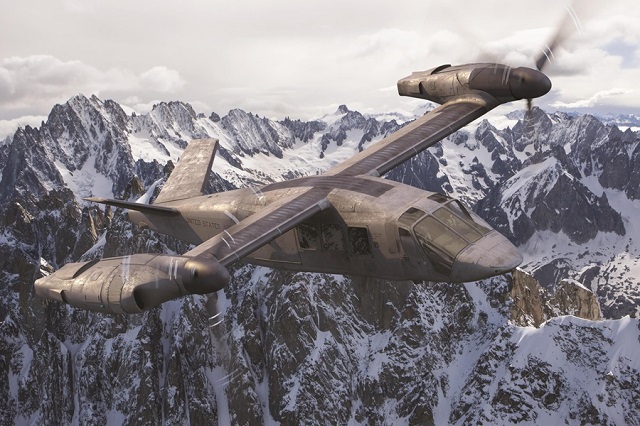The US Army is under pressure to speed up its Future Vertical Lift (FVL) acquisition as it seeks permission from the Pentagon to begin pursuing a mid-sized Capability Set 3 (CS3) aircraft to eventually succeed the Sikorsky UH-60 Black Hawk and Boeing AH-64 Apache.
The timeline presented by the US Army’s deputy programme manager for the Improved Turbine Engine and Future Vertical Lift projects begins with a materiel development decision at the turn of the fiscal year in October, and takes 13 years to reach low-rate production.
The schedule reflects a four-year "materiel solution analysis phase", during which time the Sikorsky-Boeing SB-1 Defiant and Bell V-280 Valor next-generation rotorcraft prototypes will be flying as part of the ongoing Joint Multi-Role (JMR) technology demonstration programme.
US Army programme manager Bob Sheibley says initial operational capability for the CS3 aircraft will be in the 2030s. By that measure, it would take the US Department of Defense almost as long to field the new rotorcraft type as it has taken to introduce the Lockheed Martin F-35 Lightning II stealth fighter.

Sikorsky-Boeing SB-1 Defiant
Sikorsky/Boeing
During a panel session at the American Helicopter Society (AHS) International's 72nd annual forum, in West Palm Beach, Florida on 17 May, executives from Bell Helicopter, Sikorsky, Boeing, Airbus Helicopters and Leonardo-Finmeccanica agreed industry could move faster.
One target for schedule savings is the competitive, three-year technology maturation and risk-reduction phase that would end with a down-selection for a six-year engineering and manufacturing development effort beginning in FY2024.
“The longer it is in calendar time, the bigger target it is [for termination],” says Sikorsky's JMR programme director Doug Shidler, speaking to reporters after the panel session.
“There is a general interest in accelerating the programme to protect it and to provide capability to the warfighter sooner,” adds Patrick Donnelly, Boeing’s director of FVL-Medium.
The army wants “at least two” teams working on experimental aircraft during technology maturation ahead of the “milestone B” development decision, but Sikorsky and Boeing suggest it could involve duplication and be expensive to launch a "Y-plane” effort after the Valor and Defiant fly in JMR, and money could be better spent developing the aircraft.
Sikorsky and Boeing are working on the SB-1 Defiant, and intend to jointly offer a rotorcraft solution for FVL CS 2-4. The companies, however, have no such teaming arrangement when it comes to developing a smaller armed aerial scout (CS1), or a heavy-lift replacement for the Boeing CH-47 Chinook (CS5).
David Koopersmith, vice-president and general manager of Boeing Vertical Lift, says the two companies are “all in” on CS 3. They have been providing the army with “data and different approaches” for accelerating development of and fielding an FVL-class aircraft, which must have double the speed and range of today’s rotorcraft designs but the same or better manoeuvrability.

Bell V-280 Valor
Bell Helicopter
The government appears to have alleviated one area of concern for industry. A request for information on CS1 released in February ignited concerns the army might move first on the light reconnaissance type, before initiating development of the 13.6t (30,000lb)-class (CS3) general-purpose assault and attack platforms, more akin to what is being demonstrated through JMR.
“Capability set 3 is where most of the army is focused right now,” says Sheibley, who notes nothing is formal until the army chief of staff signs off. “We’ve got a [Joint Requirements Oversight Council] for FVL coming up early next month, so that’s really a decision point for the chief to weigh in and say which directions we’re going with that. We’re moving toward capability set 3 with the medium-class helicopter. That maximises the work that’s being done in the [science and technology] community with the Joint Multi-Role technology demonstrators."
Source: FlightGlobal.com






















